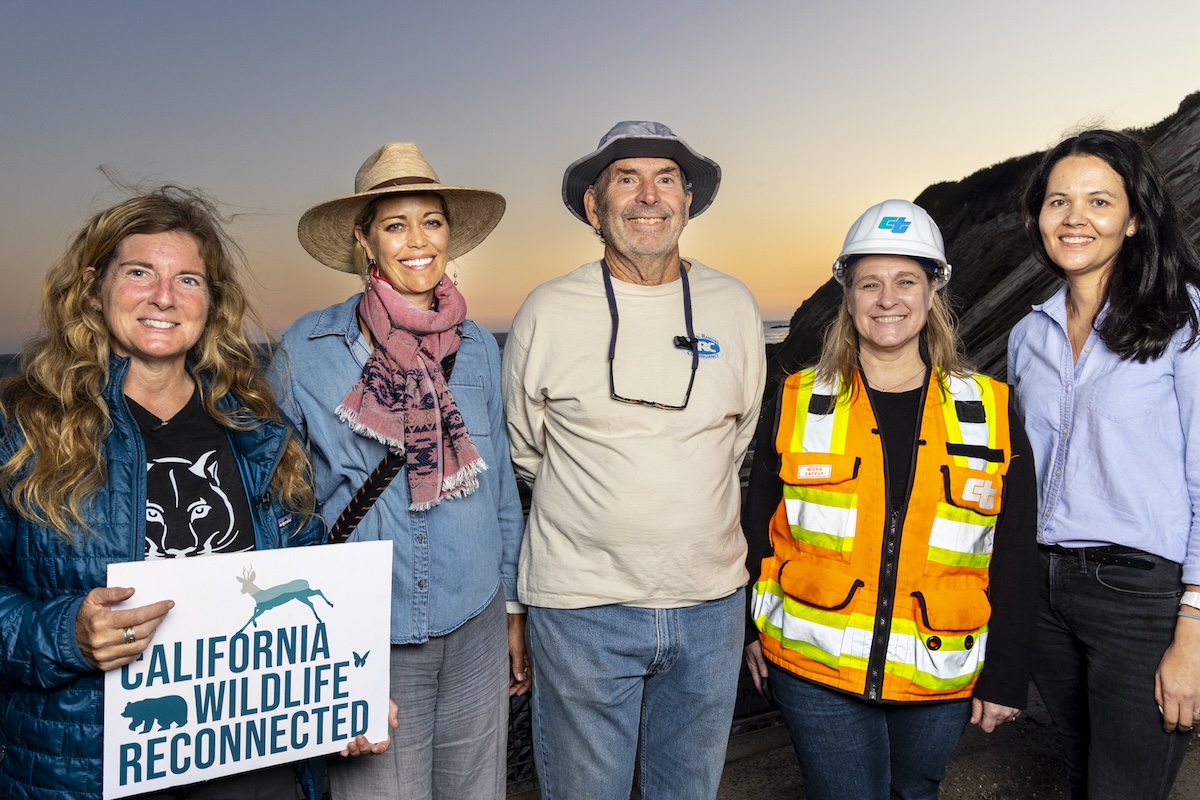Saving California Wildlife, One Crossing at a Time
Building Safe Passage Along the Gaviota Coast for Bobcats to Bears

It took a thousand grueling miles, and a lot of caffeine, for members of the National Wildlife Federation (NWF) to reach Santa Barbara County on August 24. They had launched their statewide road trip on August 19 when they began inspecting potential sites for building wildlife crossings — structures that allow animals safe passage over or under highways — throughout California.
Saturday’s final stop for the “Wildlife Crossing Across America” road-trippers was near the Gaviota Pass, where they inspected a culvert next to the Gaviota State Park entrance on Highway 101. Although the humble culvert is not much to look at now, it holds big potential for wildlife.
Built in the 1950s for ranchers to move their cattle safely across the highway, the pass is about to be remade into a true wildlife crossing, big enough for black bears, mule deer, and mountain lions to cross without getting killed. Caltrans is currently planning a $10 million improvement project for the area, called the “Gaviota Pass Wildlife Connectivity and Vehicle Collision Reduction Project.”

The project will expand the existing culvert to better accommodate larger animals and install fencing to further encourage wildlife to use the culvert for safe travel between coastal areas and Los Padres National Forest on the other side of the highway.
The diverse wildlife living along Gaviota Coast have been facing immense pressure from human development, not least of which is the fast moving traffic along Highway 101, which makes it the perfect candidate for more crossings, explained National Wildlife Federation regional executive director Beth Pratt.
“We know that at least hundreds of animals are involved in vehicle collisions in this region every single year, which is dangerous for drivers and deadly for wildlife,” said Candice Meneghin, executive director of Coastal Ranches Conservancy, an organization that is looking to both improve the Gaviota Pass and install more fish passages in the area for endangered Southern California Steelhead trout.

Gaviota was just one stop on the NWF’s road trip that coincides with a similar program recently launched: California Wildlife Reconnected, a project promoting public-private collaboration to build more wildlife crossings and improve wildlife movement across the state.
“California’s landscapes are all connected, even though they may be some distance apart,” Pratt said. “If we are able to build more crossings, we’re going to have a mountain lion that can start at the Gaviota Coast and make it all the way to the Sierras without hitting pavement.”
This tour of California’s wildlife crossings followed an earlier cross-country road trip from Los Angeles to Florida.
According to Pratt,that first phase encompassed just under 3,000 miles — similar to the mileage of the California trip, “which tells you how big this state is and how many awesome crossing projects we’re looking at on this trip.”
For more on the Wildlife Crossings Across America road trip, visit: WildlifeCrossingFund.org/RoadTrip.










You must be logged in to post a comment.